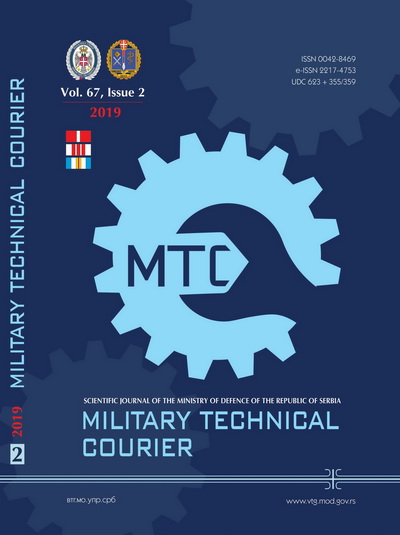Modeling theory and the level of model complexity
Abstract
This article deals with the level of detail and complexity of the model. The aim of the article is to find out what are the objective options for determining the optimal level of detail and complexity of the model. First, the basic concepts of the model and modeling are explained. Consequently, the concepts of complexity and level of detail are examined. One of the solutions to this problem is a fictitious model and a theory of model performance measurement.
References
Brooks, R.J., & Tobias, A.M. 1996. Choosing the best model: Level of detail, complexity, and model performance. Mathematical and Computer Modelling, 24(4), pp.1-14. Available at: https://doi.org/10.1016/0895-7177(96)00103-3.
Brunclík, M. 2017. Agend based modeling: when and how to create a succesful simulation. In: 12th PhD Conference Proceedings: New Approaches to the National Security, Brno: University of Defence in Brno, pp.93-98. February 14. ISBN 978-80-7231-402-7. Available at: https://www.unob.cz/fvl/vyzkum_vyvoj/Documents/Konference/Conference%20Proceedings%202017.pdf
Dlouhý, M. 2007. Simulace podnikových procesů.Brno: Computer Press (in Czech). ISBN 978-80-251-1649-4.
Flood, R.L., & Carson, E.R. 1993. Dealing with Complexity: An Introduction to the Theory and Application of Systems Science.New York: Plenum Press. 2nd edition.
Johnson, S. 2001. Emergence: The Connected Lives of Ants, Brains, Cities.New York: Scribner, p.19. ISBN 978-3411040742.
Křemen, J. 2007. Modely a systémy Academia.Praha (in Czech).
Law, A.M. 2015. Simulation modeling and analysis.New York: McGraw-Hill Education. Fifth edition. ISBN 9781259254383.
Maria, A. 1997. Introduction to modeling and simulation. In S. Andradóttir, K.J. Healy, D.H. Withers, & B.L. Nelson Eds., Proceedings of the 29th conference on Winter simulation - WSC '97, Atlanta, Georgia, USA, pp.7-13. December 07-10. Available at: https://doi.org/10.1145/268437.268440.
-The Open University: OpenLearn. 2019. Models and modelling. [Internet]. Available at: https://www.open.edu/openlearn/science-maths-technology/computing-and-ict/models-and-modelling/content-section-2.1. Accessed: 10 February 2019.
Zeigler, B.P. 1976. Theory of Modelling and Simulation.New York: John Wiley.
Proposed Creative Commons Copyright Notices
Proposed Policy for Military Technical Courier (Journals That Offer Open Access)
Authors who publish with this journal agree to the following terms:
Authors retain copyright and grant the journal right of first publication with the work simultaneously licensed under a Creative Commons Attribution License that allows others to share the work with an acknowledgement of the work's authorship and initial publication in this journal.
- Authors are able to enter into separate, additional contractual arrangements for the non-exclusive distribution of the journal's published version of the work (e.g., post it to an institutional repository or publish it in a book), with an acknowledgement of its initial publication in this journal.
- Authors are permitted and encouraged to post their work online (e.g., in institutional repositories or on their website) prior to and during the submission process, as it can lead to productive exchanges, as well as earlier and greater citation of published work (See The Effect of Open Access).

